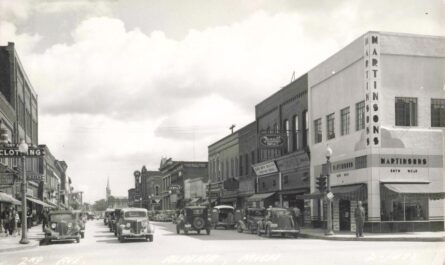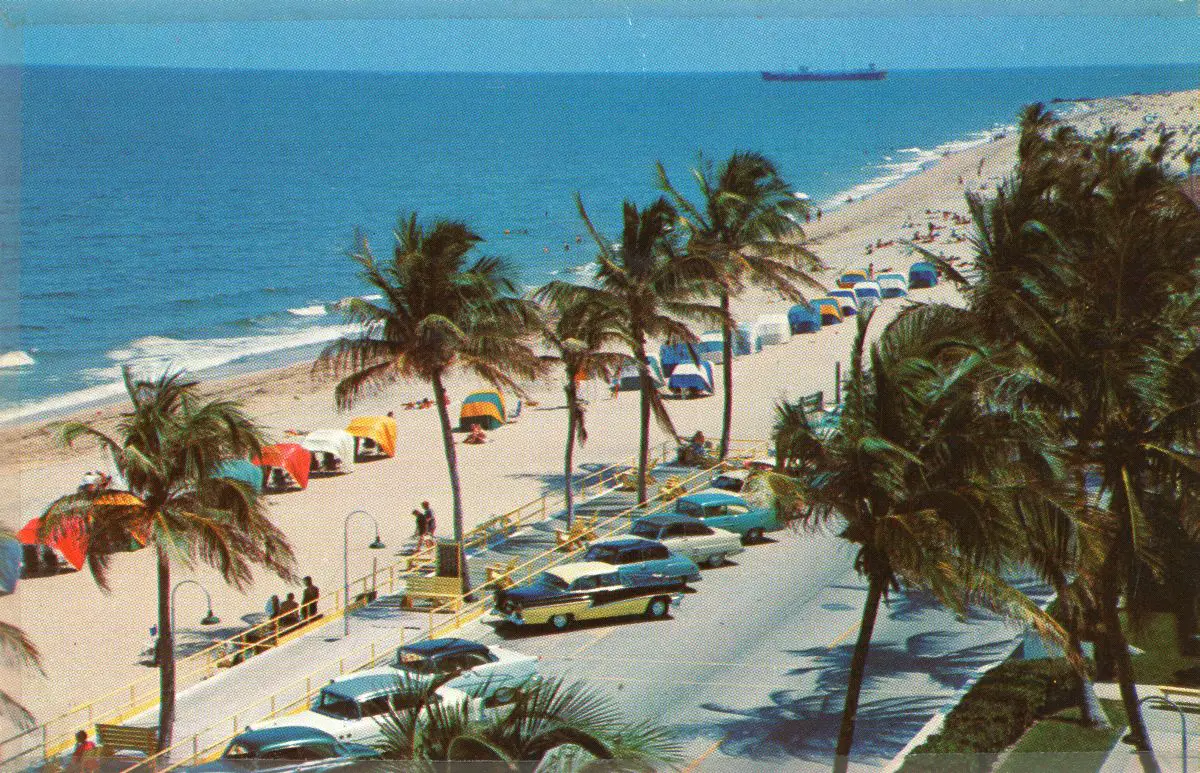When the United States entered World War II, propaganda posters encouraged workers to contribute their labor to the war effort with the promise of winning the war for a better future. Posters also encouraged Americans to volunteer and enlist in the military, buy war bonds, conserve resources and conserve food. The production of these posters relied heavily on visual imagery to inspire patriotism as well as fear to meet government expectations. These propaganda posters were ubiquitous throughout American cities during World War II and have allowed us today to understand how people felt about themselves and their nation during this time period.
What are propaganda posters? Madison Avenue & The War Effort
The U.S. Office for Emergency Management’s War Production Board (WPB) developed visuals for industries to encourage production. The WPB hired commercial artists and designers to develop posters. They advised industrial managers to purchase a large number of posters and warned them that “posters put up in a ratio of less than one for every 100 workmen on the shift are usually too thinly spread to be wholly effective.” For the posters, the OWI created six propaganda themes. “The Need to Work,” for example, stressed the need for Americans to labor to win the war.
Michigan Factories Engauge For War Production
This gallery from the Walter P. Reuther Libary at Wayne State University features Michigan Labor propaganda posters designed for use in American factories during WWII, including those created by the Labor-Management War Production Drive Committee. Most of the auto factories in Michigan were converted for war production
This small set of WWII propaganda and encouragement posters hails from the days when we had an all-hands-on-deck mentality on what it took to win this war against fascists. Here are a few from the Walter P. Reuther Library.
While We Were Scrappin’ U-Know-Who was Crappin
A Labor-Management War Production Drive Committee poster depicts a wounded soldier giving the “thumbs-up” while soldiers and tanks rush in the background. It alludes to individuals who take long restroom breaks while others labor nonstop—part of a series of posters promoting worker efficiency in the military industry.
Don’t Loaf on the Job! Tomorrow’s Battles are being Decided Here Today
Another motivational billboard to keep workers engaged throughout the war. It depicts troops in shadow advancing across an undetermined terrain. Workers were to be instilled with the need to assist combat soldiers through this form of propaganda.
That Good Old Right! Your Free Right to Work For Victory
Adolph Hilter is knocked out by Uncle Sam’s right punch. On his sleeve is printed, “No Factory Absentees.” Here’s an example of a political point of view or directly confronting the enemy by simply showing up. It was effective and instilled a sense of common purpose in those involved in the war effort.
Are you this kind of Loyal American? Be Proud of a Job Well Done!
As he enters the restroom, a soldier smiles. “I Never Waste Any Time in Here!” he is captioned—another toilet joke about spending too much time on the throne at work.
Are you this kind of American? Be Proud of a Job Well Done!
A war worker unwinds at home, smoking a pipe and reading the newspaper. “I do all my loathing at home!” he is captioned. This implied to the war worker that “anything you do on your own time is yours.” It also taught you that you had control outside of work.
Are you this kind of American? Don’t Help the Enemy
While her station is idle, a female combat worker puts on lipstick. “My job can’t wait…but my date can’t!” she captioned. Women were essential to the United States’ ability to meet war production requirements during WWII. However, there was a sense that women were wholly focused on one thing…. finding a spouse. This poster is an example of a misogynistic viewpoint.
Are you this kind of American? Don’t Help our Enemies
A war worker smokes cigarettes and reads a race form in the background as another worker toils at a press. He is quoted as saying, “Let George do it.” I have to choose a winner!” This is a frequent format for worker incentive posters during WWII. Using a racing forum is a bad habit that is not worth anyone’s time.
I am doing without so they don’t have to
A Labor-Management Military Production Drive Committee poster depicts a war worker tightening his belt. Soldiers gallop across distant hills in the backdrop. This is an excellent example of encouraging shared sacrifice during a time of war. When a worker is unable to eat or loses weight due to the war effort, he tightens his belt.
“All Smackin’ Together Every Day! Every Absent Worker Halts the TEAM-WORK
A bare-chested war worker rides atop a tank into battle, holding his tools aloft. An aircraft squadron flies across the background. Simply having workers show up to do their job is a critical success factor in the war effort. Labor unrest was common in the early days of the war.
Source: Clemens, Elizabeth. “Walter P. Reuther Library American Propaganda: Second World War.” Walter P. Reuther Library American Propaganda: Second World War, reuther.wayne.edu/image/tid/1938. Accessed 20 Nov. 2022.
General Motors and Oldsmobile
This poster was discovered on the campus of the University of Minnesota. Workers and management had a history of animosity, but the wartime circumstances required cooperation between the two. Posters advertising industrial incentives were strewn across the manufacturing floor. Working for a large company has given way to fulfilling your patriotic duty for your nation.
Source: “Together: we can do it! : keep ’em firing!,” Gallery, accessed November 20, 2022, http://gallery.lib.umn.edu/items/show/1833.
Women, Minorities, And Immigrants – Valiant Americans Doing Their Patriotic Duty.
Women, minorities and immigrants were depicted as valiant Americans doing their patriotic duty. The posters were used to encourage people to work harder. They also encouraged workers to be more productive and efficient in order to aid the war effort.
Source: United We Win, Photograph by Alexander Liberman, 1943, Printed by the Government, Printing Office for the War Manpower Commission, Records of the Office of Government Reports View in Online Catalog
Final Thoughts on Propaganda Posters in WW2
During World War II, propaganda posters were used for multiple purposes: to persuade people to do things; inform people about war efforts; encourage citizens to do their part for their country through volunteering or purchasing goods that supported those efforts; scare them into doing so with threats of attacks by the enemy; make them feel good about themselves by showing happy scenes at home or abroad where Americans were working hard together toward victory.
Propaganda posters were an important tool during World War II to rally support for the war effort. They contained many messages, such as the importance of safety for industrial workers, encouraging Americans to contribute their labor towards the war effort, and show their patriotism. Posters also helped create a connection between factory workers and soldiers fighting overseas by showing them as heroes who were fighting together against fascism



